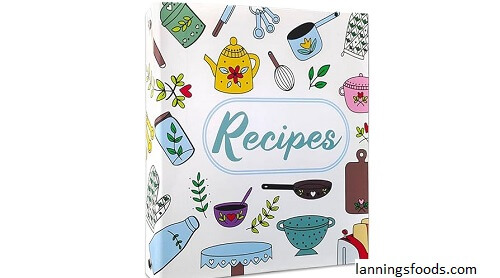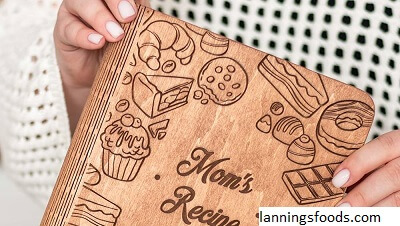Ultimate Guide to Book Binders:
Recipe:
A special place in most kitchens, at least in the era of digital and online cooking tutorials, will be held by this traditional recipe book binder-it will be a tangible collection of your prized family, discoveries in the culinary arts, and everything in between. If you are interested in cooking and want to have your personalized binder, this article will provide you with a guide as well as answer frequently asked questions about bookbinders.

Why Make a Recipe Book Binder?
A recipe book binder has many uses:
- Personalization: You can make it specifically to your taste and style
- Organization: It’s great for categorizing, making it easy to find what you are looking for
- Preservation: You won’t spill your precious all over the place.
- Sharing: It’s a great way to share your creations with friends and family
Choosing Your Binder:
Recipe:
Size and Type:
Recipe binders range from 1-inch to 3-inch rings. This will depend on the number of you will include. A small set may do very well in a 1-inch binder, while a larger one may call for a 2- or 3-inch binder.
Material:
Binders are made of various materials. Some of the common ones are:
- Plastic: Light in weight and usually cheaper.
- Leather: Durable and provides that classic look.
- Fabric: It is a homey, homemade look.
Design:
Select a binder with a design that expresses you. Most people are looking for binders based on the theme of their kitchen or topics such as cooking. There are binders with a cooking theme, colorful designs, etc.
Recipe Organization:
Recipe:
Categories:
- The beauty of having a recipe binder is keeping it organized. Organize your into categories like:Appetizers
- Main Courses
- Desserts
- Beverages
Breakfast:
But you also can further narrow them under groups you have if you have hundreds of. For instance, under “Main Courses,” you would include other subgroups under it called “Vegetarian,” “Seafood,” and “Meat.”
Using dividers you can also segregate groups. You could buy prefabricated ones or produce your own in cardstocks. With labeling each separator, you’ll easily navigate to the area that suits what you need to see
Recipe Cards and Sheets Formatted:
Recipe:

There are so many options to keep a record of the recipes. Other writers use handwritten cards, while others print sheets for such purposes. Other formatting tips include the following:
- Title: Put down the name of the.
- Ingredients: Place all the ingredients in an order they may require during the preparation.
- Instructions: This section should also be written step by step.
- Notes: In case of special notes or tips, like cooking times or serving suggestions. Cards
Many home cooks prefer cards. They are usually 4×6 inches, making them an ideal size for most binders. You can find blank recipe cards at craft stores, or you can download them from a computer.
Printables:
If you want your recipe card to be a bit more professional-looking, you could print them up using design software. Sites like Canva create custom templates of cards so you can add images or personal touches.
Keeping Your Safe:
Recipe:
Page Protectors:
Sheet protectors are the clear ones, which prevent you from leaking or staining them. These clear plastic sleeves help you insert your cards or printed sheets and hold them ready for access whenever required. Sheet protectors come in different sizes, so buy sizes that suit your binder.
More Tips:
Lamination: If you intend to use some of your frequently, then laminate them for more durability.
Spill-Resistant Material: If you often cook using messy ingredients, look for a material that is a breeze to wipe clean.
Tailor Your Binder:
Cover Design:
Make your binder personalized. You can insert:
- Photos: A photo of the family or any photo of your favorite food may personalize the binder.
- Artworks: If you are into artwork, then you should try to make your personalized binder cover.
- Vinyl Decals: You can get these online and apply them to the cover to give it a fashionable look.
A Personal Touch:
Recipe:
You can include a dedication page or a page for family memories of cooking. You may even want to write about the origin of some of the memorable meals you shared with your family.
Keeping Your Binder:
Recipe:
Up-to-date:
As you try new or create your own, it is a good idea to update your binder. Make time every few months to add new recipes, remove those that you no longer use, and reorganize sections as needed.
Seasonal Recipes:
You may have a holiday section with you to prepare when holidays roll around or a summer BBQ section that provides ideas you use during those months. This way you can easily locate relevant for that time of year.
Five FAQs About Book Binders:
Recipe:
1. How can I organize my within a binder?
Organize your in-sections such as appetizers, main courses, desserts, and beverages. These categories can even be subdivided and separated using dividers complete with labels to help keep things organized.
2. Could you include cookbooks within my binder?
Yes! You may photocopy them from the books, print them out, or even take a photo of them if you prefer to maintain them in digital format. You just need to make sure that you credit the sources, especially if you are sharing it with other people.
3. What do I need to protect the recipes?
The best method for protecting against spillage and staining is by using clear sheet protectors. Another great option would be to laminate frequently used for added durability.
4. How do I handle digital recipes?
For digital recipes, you can print them and put them into your binder. Or you can make a digital binder through the use of a cloud service or an app that enables you to keep the organized electronically accessible and easily updatable.
5. How often do I update my recipe binder?
Naturally, you check and renew the contents of your binder every couple of months. That would help you insert new ones, eliminate old or unused ones, and rearrange when necessary. Maintaining it periodically ensures that the collection stays fresh and fun to use.
Conclusion:
Recipe:

A recipe book binder is the most rewarding kind of project to do because it represents the celebration of your love for cooking. The binder that you finally choose carefully, organized in a tasteful manner along with all the personal touches, creates a treasured collection with you for all the years to come. Whether a novice or experienced cook, this binder serves as a source of inspiration and an expression of a culinary journey.